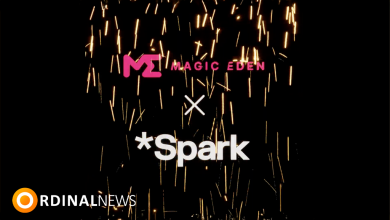Rijndael’s “Slugline” Lets You Pay Bitcoin Transaction Fees with Runes

At the recent PlebFi Bitcoin dev conference, developer Rijndael introduced “Slugline” – a proof-of-concept that enables Bitcoin Layer 1 transaction fees to be paid using Runes instead of BTC.
While acting as a judge at the PlebFi hackathon, Rijndael built the prototype anyway – a minimal, working demonstration of a “Runes Paymaster” for Bitcoin.
How Slugline Works
The concept mimics a kind of “transaction carpool” on Bitcoin. Here’s how it operates:
- Alice wants to send a Bitcoin transaction but doesn’t want to pay the fee in BTC.
- Instead, she attaches Runes to her transaction and includes a zero-value P2A anchor output, making the transaction non-standard and unconfirmed.
- Alice broadcasts this transaction to a network of potential “fee-payers” – think of them as decentralized mempool watchers, or “Bobs”.
- Bob, seeing the attached Runes, chooses to pay for Alice’s transaction fee by issuing a Child Pays For Parent (CPFP) transaction.
- In doing so, Bob claims the Runes included in Alice’s transaction – effectively acting as a Runes-based fee market.
Alice has paid Bob in Runes to cover her transaction fee. In essence, the transaction fee has been paid in Runes – not Bitcoin.
explained Rijndael in a post on X.
Why Would Alice Do This?
Rijndael outlines several use cases for this mechanism:
- A shared “gas token” ecosystem might emerge, using scarce or intentionally high-cost Runes (like UNCOMMON•GOODS) as a unit of fee payment during high congestion periods.
- Wallets could emerge that are Rune-only – users with no BTC could still transact using Rune balances.
- Miners might issue their own Runes as blockspace vouchers, tokenizing future blockspace as a discounted futures market.
What Works (and What Doesn’t)
The prototype is still in its early stages:
- Alice must manually post her PSBT (Partially Signed Bitcoin Transaction) to Bob’s webserver.
- The system isn’t yet peer-to-peer; it relies on a central Bob rather than a decentralized relay network (e.g., Nostr).
- There’s no dynamic Rune pricing mechanism yet – a future version could determine fee equivalence using median sats/vByte data over previous blocks.
Despite these limitations, the proof-of-concept works end-to-end, allowing for functional BTC transactions where fees are paid in Runes.




